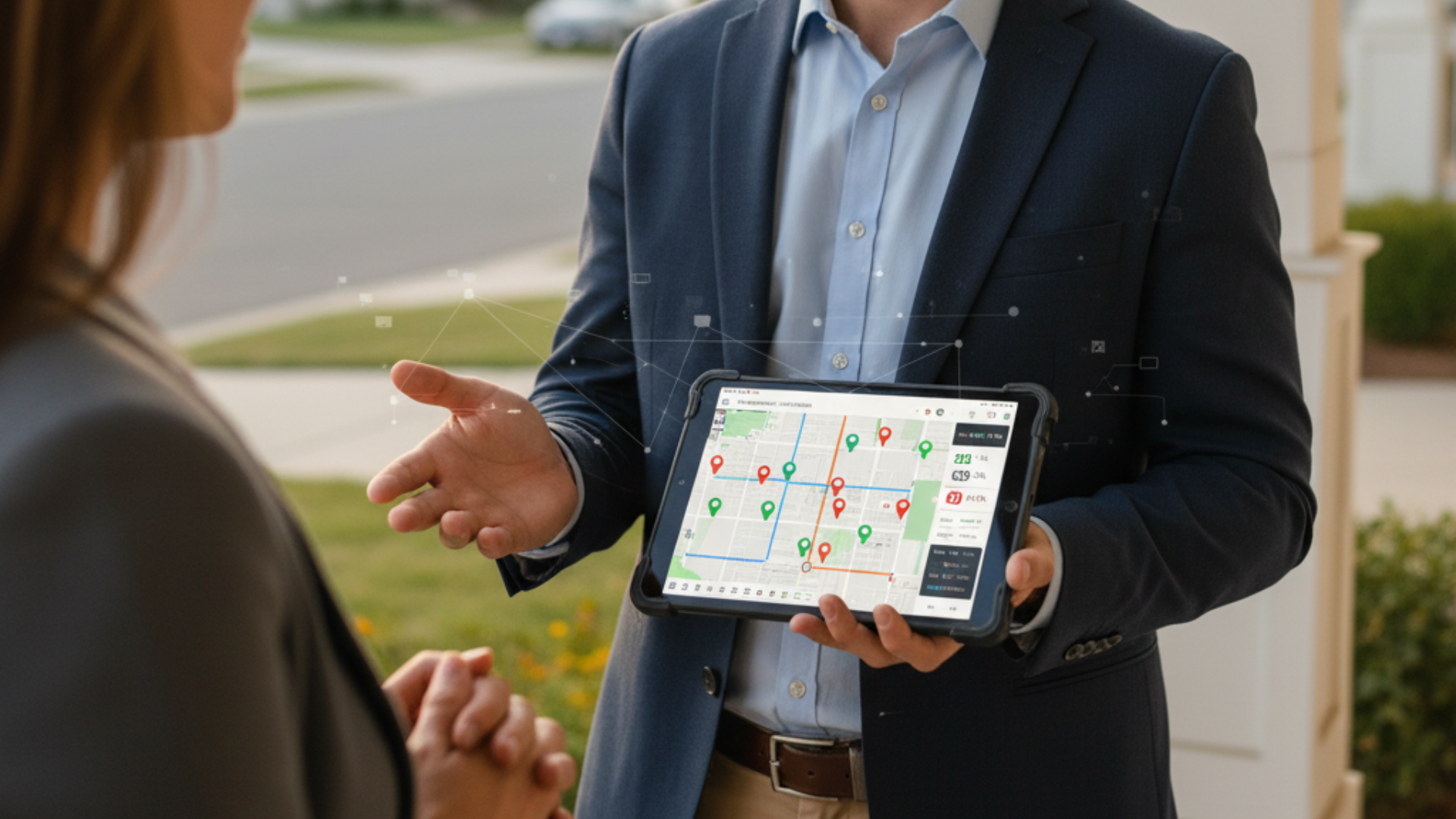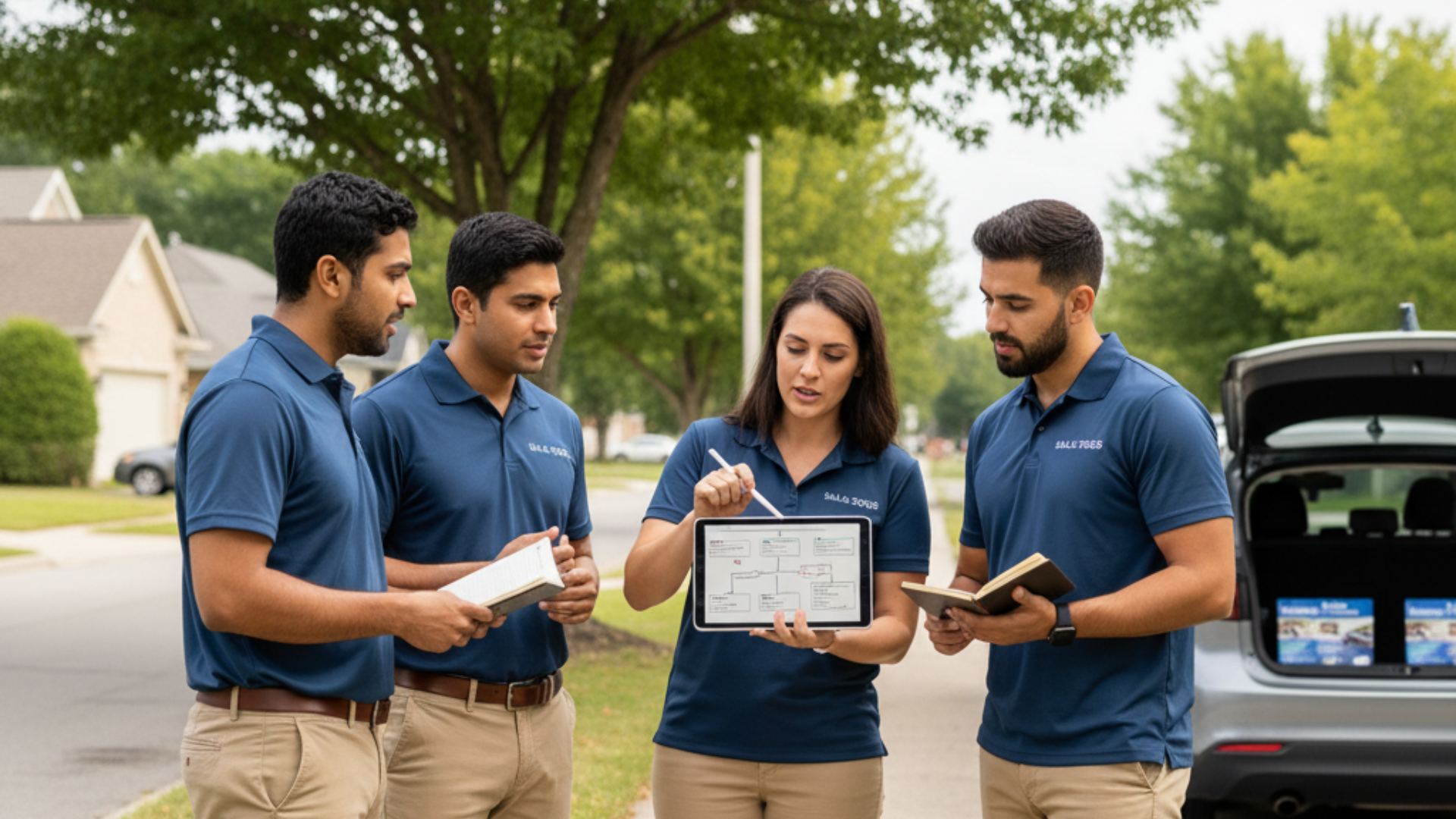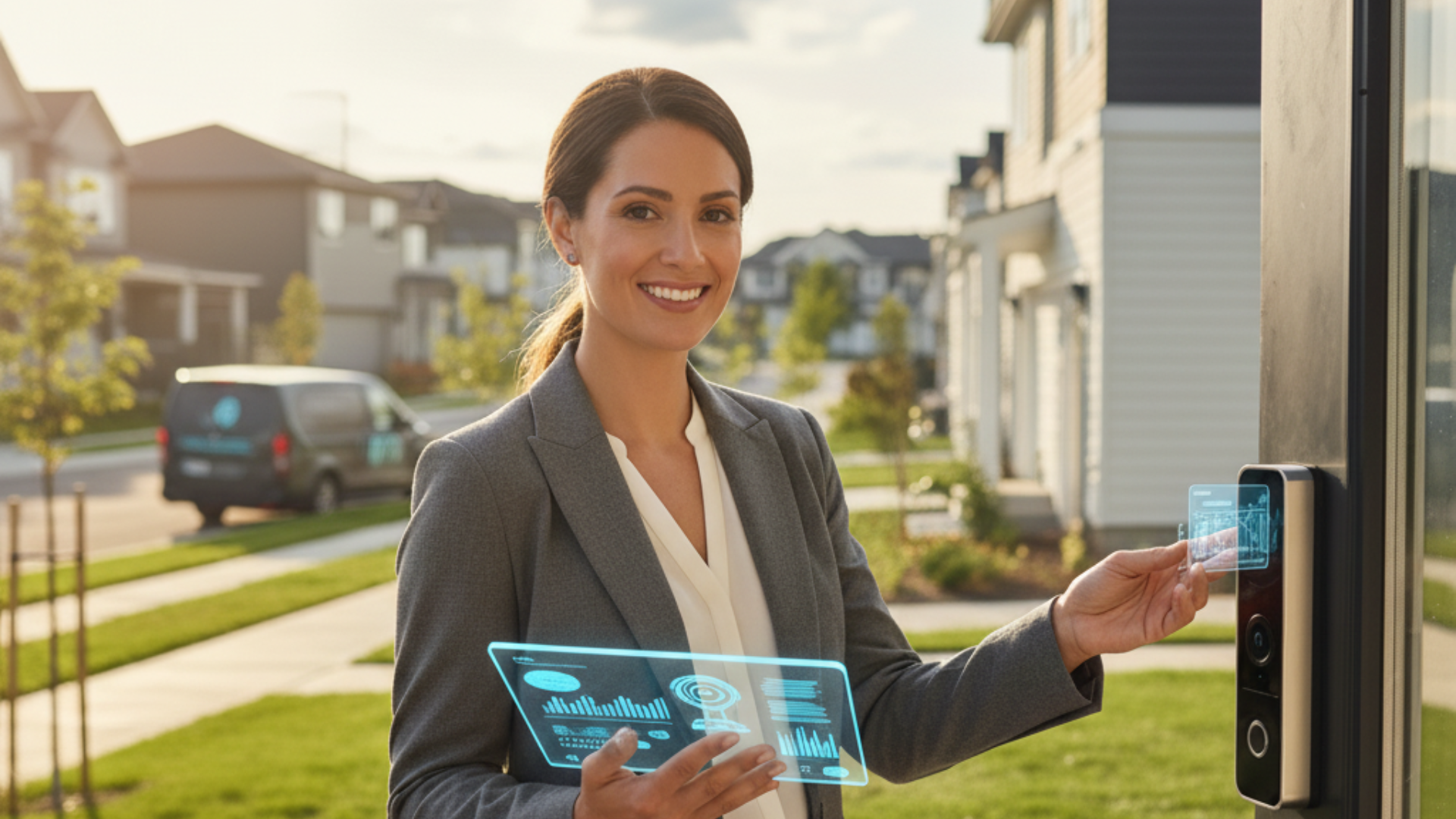A rep heads out at 4 PM, knocks on house after house, repeating the same old opening line used in the world of door-to-door sales. The homeowner barely looks up, and then the rep hears the same “I’ll think about it” objection again and again, and with each one, he thinks he can be a potential customer. Frustration creeps in, making it hard to become a successful door salesperson. Burnout is around the corner.
That pain point is common. Even in 2025, door-to-door sales is thriving, a space where sales training helps professionals develop strong sales strategies, sales skills, and smart territory management to make good money.
In fact, the global direct-selling market is projected to grow to around US $328.26 billion by 2030 (CAGR ~6.7%), showcasing the success of effective sales strategies.
In the end, it’s not about the pitch. It’s about understanding potential customers and finding the best door to knock on. That’s what makes all the difference between an average knock and a successful door knock.
What Are Advanced Scripts & Closing Techniques for D2D Sales Reps?
If you’re tired of hearing “I’m not interested,” it’s time to upgrade how you sell door-to-door. Top field sales teams use smart sales techniques and strong product knowledge to connect with potential customers and effectively handle objections, not scripts.
A great door-to-door salesperson, just like top performers, builds trust through good advice, sharp listening, and a deep understanding of customers' needs. Every chat feels natural, whether it’s with a family member type or someone comparing other businesses.
That’s what separates top door performers from the average person, turning rejection into results and boosting the success rate of every knock into an effective door.
These psychology-backed scripts use open-ended questions and active listening to guide the sale. Through this guide, you can master the sales tips and become a trusted advisor who connects, converts, and delivers an engaging sales pitch.
Key Takeaways
- Master practical door sales tips to turn every knock into a confident, results-driven conversation.
- Understand your prospective customers deeply to build trust and tailor each pitch effectively.
- Maintain motivation by tracking small wins and staying consistent through rejection.
- Use effective prospecting to focus on the target audience, qualified leads, and save valuable time in the field.
- Always add security to your pitch with credibility signals like testimonials or certifications.
Want higher conversion from every route? Explore Knockbase and start testing smarter scripts and automated follow-ups this week.
The Modern Reality of Door-to-Door Sales
1. Why D2D still works
Face-to-face builds trust in a way digital alone can’t. Someone standing on your doorstep, sharing the benefit, is inherently more personal. Special for:
- Hyper-local targeting: Being physically present in a neighborhood gives you an advantage over remote or digital ads.
- Less noise: Online channels are crowded; many prospects still respond when a real person shows up to gather information and opens a conversation.
For example, the “door-to-door sales” market was estimated at roughly USD $170 billion annually, with forecasts of reaching around USD $269.2 billion by 2029 at ~6.6% CAGR.
2. What’s changed (and why old scripts burn out)
- Tech-savvy customers: Many prospects have already researched your home security service/product before you knock, so maintaining eye contact is essential as they won’t listen to a generic pitch.
- Social & regulatory changes: People are more wary of strangers, more likely to screen you at the door; credibility matters more.
The shift from “pitch-pitch-close” to “conversation → discovery → trust → serve” helps a longer, deeper sales process and lessens the probability of facing rejections.
Data says: D2D isn’t dying, the global direct selling market is still expected to grow at ~6 %+ CAGR through 2030.
The three core challenges reps face
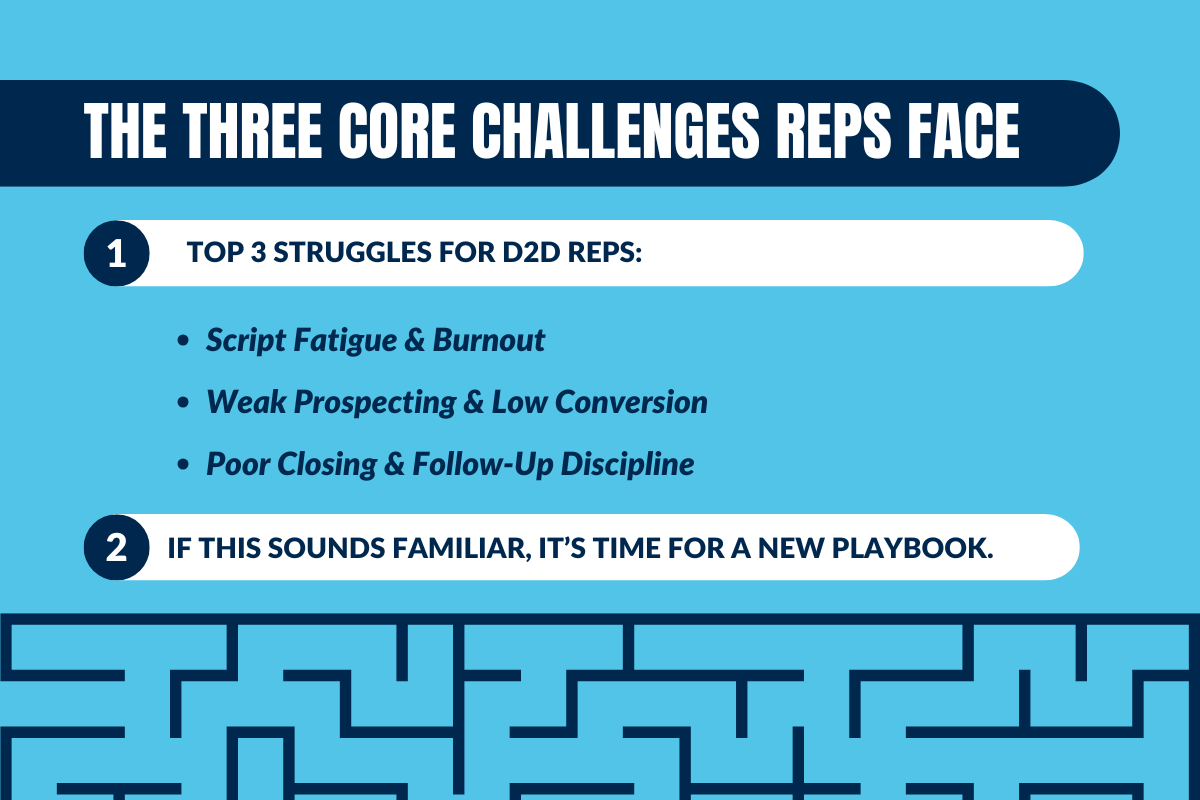
- Script fatigue & burn-out, repeating the same lines, hearing the same objections, and morale slips.
- Low conversion because of weak prospecting or poor gate-keeping/qualification, leading to knocking blindly on door-to-door sales, talking to the wrong person, and investing time in dead leads.
- Poor closing techniques (assuming deal will just happen) + inadequate follow-up – many reps think if they just talk well, the sale will come; but it needs momentum and follow-through.
If any of these sound familiar, this playbook is for you.
Take a deeper look at: Why D2D Sales Still Outperform Digital Channels in 2025
The 5 Essential Frameworks Every D2D Sales Rep Must Master
Before diving into the detailed steps, here are the five core frameworks that guide every successful door-to-door sales rep. These serve as the foundation for better prospecting, stronger conversations, and higher close rates.
Framework #1: Smart Prospecting + Qualification
1. Re-thinking “knock every door”
- The myth: “A door salesperson can just knock on all houses and hope for a yes.”
- The better approach: Targeted territories + qualified knocks. Use data (if you have it) – neighborhoods with previous purchases, move-ins, and certain demographics. This improves efficiency and reduces wasted effort.
2. Pre-knock checklist
- Clear criteria: Does the household fit your ideal customer profile in the sales process? (homeowner vs renter, decision-maker present, interest in your product category)
- Time-window planning: Use best-times data (see later) to schedule your knocks when people are most likely receptive.
- Materials ready: One-sheet benefit summary, device/tablet if applicable, mobile payment capability if you close on site.
- Mental preparation: Adopt the attitude of helping, not “pitching”. You’re there to solve a problem in door sales, not push.
3. First 30 seconds: script + body language
Body language matters: Stand tall, friendly smile, don’t block the doorway with a clipboard; knock, then step back (shows respect for their space).
- Opening line geared to rapport:
“Hi – I’m [Name] with [Brand]. I’m working in your neighborhood today and wanted to check something quickly for you… For now, is it okay for a minute?”
- Qualification question built in:
“Just to ask, how long have you lived here? Great, just wondering: have you ever looked into relevant information about [product/service benefit]?”
If they say “No time now,” → respectfully exit:
“No problem, I’ll stop back later. What might be a better time for door-to-door salespeople like myself?”
4. Decision point: Proceed or politely exit
- If they say yes (they’ll talk): proceed.
- If they say no / not a fit/uninterested: thank them, leave something (flyer, digital link), make a note – then move on. This saves time and energy for better prospects.
Framework #2: Advanced Pitching & Storytelling (Scripts)
1. The story arc: Hook → Value → Proof → Call to Action
- A. Hook: Tailored to their environment:
“We just helped the family two doors down reduce their electricity bills by 20%.”
- B. Value: Translate the benefit into their language:
“That means less hassle, lower cost, and more peace of mind.”
- C. Proof: Quick testimonial / credible stat:
“So far in your area, we’ve done 35 homes, and the average savings is $ X/month.”
- D. Call to action:
“If you like, we could check your home’s eligibility right now (takes 5 minutes) and lock in the special rate.”
2. Sample scripts by scenario
- A. New home / move-in:
“Settling into your new place is exciting. One thing many new homeowners ask is how to get the best value from the home, such as solar panels. We’re offering…”
- B. Pain-based script:
“If you’re like many neighbors I spoke with, you’ve been seeing utility bills creep up each year. What if we could stop that trend?”
- C. Referral / Neighbor proof script:
“Your neighbor, Mr. Mathew, two houses over, asked me to stop by and wanted to make sure you had the same info…”
3. Objection-handling real talk
- A. “I don’t have time now.” →
“Totally understand, it’ll only take 3-5 minutes. When would be a better time today or tomorrow?”
- B. “It’s too expensive / I can’t afford it.” →
“I get that. Just so you can compare side-by-side: I can pull up total cost vs. savings, without any stranger pushing you to decide if it fits you.”
- C. “I’m not interested / leave me alone.” →
“Understood. Would it be alright if I left this flyer in case things change, you ever want to revisit?”
4. Body language & voice tone in the field
Match the homeowner’s pace & tone, but lead with energy.
- Use open posture: angle body slightly toward the door, nod as they talk, avoid crossing arms.
- Mirror subtle cues: if they’re relaxed, slow down; if they’re busy, keep it short and crisp.
- Use a visual anchor: a tablet, a simple graphic, or a benefit sheet helps ground the conversation.
Framework #3: Closing Techniques that Convert in the Field
1. What closing really means in door-to-door selling
Closing isn’t just “ask for the deal” at the end; it’s guiding the conversation toward a decision throughout. Look for closing signals: they ask questions, lean in, point at documents, nod. When you see them, it’s time.
2. Top closing methods suitable for D2D
- A. Assumptive Close:
“When we get your system installed next week…”
- B. Summary Close:
“So we’ve got less cost, more peace of mind, the installation included, does everything look good so we can get the paperwork done today?”
- C. Now-or-Never Close (use sparingly):
“Because we’re offering the neighborhood bonus only this week…”
- D. Testimonial Close:
“Just two doors down, Mrs. Singh signed yesterday and said the whole process was smooth; your system could start saving you from next month.”
- E. Question Close:
“What would stop you from starting today?”
3. Choosing the right close for the moment
- If they’re engaged and asking questions → go for Assumptive or Summary.
- If they’re hesitant → use the Testimonial or Question approach.
- If you’re under time pressure / special offer window → Now-or-Never.
- The rule is to adapt, don’t force.
4. After the “Yes” – Seal the deal
- Confirm next steps: “You’ll get the confirmation call tomorrow; our tech arrives between 9-11 am.”
- Leave behind something tangible related to door-to-door sales: business card, warranty sheet, next-step card.
- Set expectations clearly (helps reduce post-sale anxiety/complaints).
5. If they say “Maybe / Need to think”
- A. Don’t vanish. Schedule follow-up:
“Sounds like you’d like to check with your partner. When would be a good time for me to revisit so we can answer any remaining questions?”
- B. Capture permission:
“Would it be okay if I gave you a quick call tomorrow evening to see how you feel about what we discussed?”
- C. Leave a “mini-close”:
“And just so you know, if we can show savings of $X/month, would you want to move forward?”
It plants the decision seed.
Framework #4: Follow-Up & Longevity (Beyond the Knock)
1. Why follow-up separates average from high performers
Many reps stop when they leave the door. High-performers keep the momentum: follow-up + persistence = conversion.
2. Multi-touch strategy in D2D
- Touch #1: the knock (face-to-face)
- Touch #2: immediate leave-behind + a quick thank-you SMS or WhatsApp (if you captured/asked)
- Touch #3: scheduled callback or revisit
- Touch #4: final “last chance” conversation/flyer or email
3. Tracking & data for follow-up
- Use a mobile CRM/app like Knockbase to log: who opened the door, what they said, and next-step date.
- Use the territory map and analytics: when do people close after the first knock? (helps refine best times for future knocks)
- Track your pipeline: door → talk → scheduled → closed.
4. Body language & voice tone during follow-up
Still maintain a consultative tone:
“Just checking in to see how you feel about what we discussed last week.”
Avoid pushy: “Did you buy yet?”
Respect their pace and decision-making.
5. Retention & referrals from D2D
- Ask every new customer: "Do you know a neighbor who might also benefit from what we did for you?"
- Use social proof: "Your neighbor two doors over just signed up and said the process was straightforward."
- Keep the relationship: Send reminders, value-add updates, maybe a “6-month update” card or message.
The best sales are referred/renewed sales, not just one-time knocks.
Also read: How to Track and Optimize Door‑to‑Door Sales Routes for Maximum Impact
Framework #5: Re-invigorating Your Reps & Avoiding Burnout
1. Recognize the emotional side of door-to-door
Daily knock-backs in D2D sales can wear down confidence. It’s physically and emotionally intense: meeting strangers, hearing many “no’s”, and being on your feet all day. Without support, you’ll burn out.
2. Script refresh strategies
- Rotate your scripts every 4-6 weeks: tweak opening, change testimonial story, shift the value-point.
- Encourage reps to personalize: use their own voice, add genuine micro-stories (one-minute anecdote from a prior knock), it makes them more real.
- Avoid robotic “sound-like-everyone-else” tone when addressing customers.
3. Body language, mindset & recovery
- Warm-up before fieldwork: 2-3 minute pep talk, check posture, breathing, and mindset.
- After the day: de-brief as a team, share wins (one “yes” story from the day), share one rejection story, and what you learned.
- Encourage peer check-ins: talk about what’s working, support each other.
4. Use of analytics & feedback loops
- Track conversion rates by rep, by territory, by time-of-day.
- Identify best scripts for your sales force, best time slots (e.g., 3-4 pm and 4-8 pm windows).
- Celebrate micro-wins: first knock, first close, first referral, recognition keeps morale up.
5. Ethical selling and reputation-building
- Train sales reps to sell honestly, avoid pushy or manipulative tactics. Burning trust today with potential customers means fewer referrals tomorrow.
- Use real benefits, data from your company, and real testimonials.
- A strong reputation in a neighborhood, built by satisfied customers, is gold.
Real-World Use Cases & Best-Fit Scenarios
1. Industries where D2D excels
- Home services: solar, HVAC / air-conditioning, security systems, where demonstration, explanation, and trust matter.
- New housing developments / gated communities: fresh market, less saturation.
- Local business campaigns (e.g., a local internet provider offering deals to entire blocks) are community-based offers.
2. Matching script to scenario
- Homeowner vs renter: If there's a homeowner, talk investment / cost-savings; if a renter, talk convenience/flexibility, which can lead to more sales.
- Time-of-day matters: evening when people are home, weekend morning when relaxed.
- Decision-maker not present: leave behind, schedule a revisit rather than pushing right away.
3. Examples of good vs bad door-sales approaches
Bad: Rep knocks, jumps into a long generic script (“Hello, I’m with Company X, let me tell you all about our service…”), no qualification, no listening, no follow-up plan.
Good: Rep knocks, opens with “Hi – I’m [Name] in your area today, mind if I check something quickly?” Listens to homeowner’s reply, asks a one-minute question, adapts pitch, closes with “Would you like me to check eligibility now?” or “When’s a good time to revisit?”
4. Metrics you should track
- Knock → Talk ratio: How many houses knocked vs how many you get to talk.
- Talk → Close ratio: Among those you talk to, how many convert or get next-step scheduled?
- Follow-Up → Close ratio: How many scheduled callbacks become deals?
- Time efficiency: How many knocks/day in your prime window (3-4 pm; 4-8 pm).
- Retention/referral rate: How many customers refer neighbors or renew?
Advanced Tips: Body Language, Timing & Scripts that Surprise
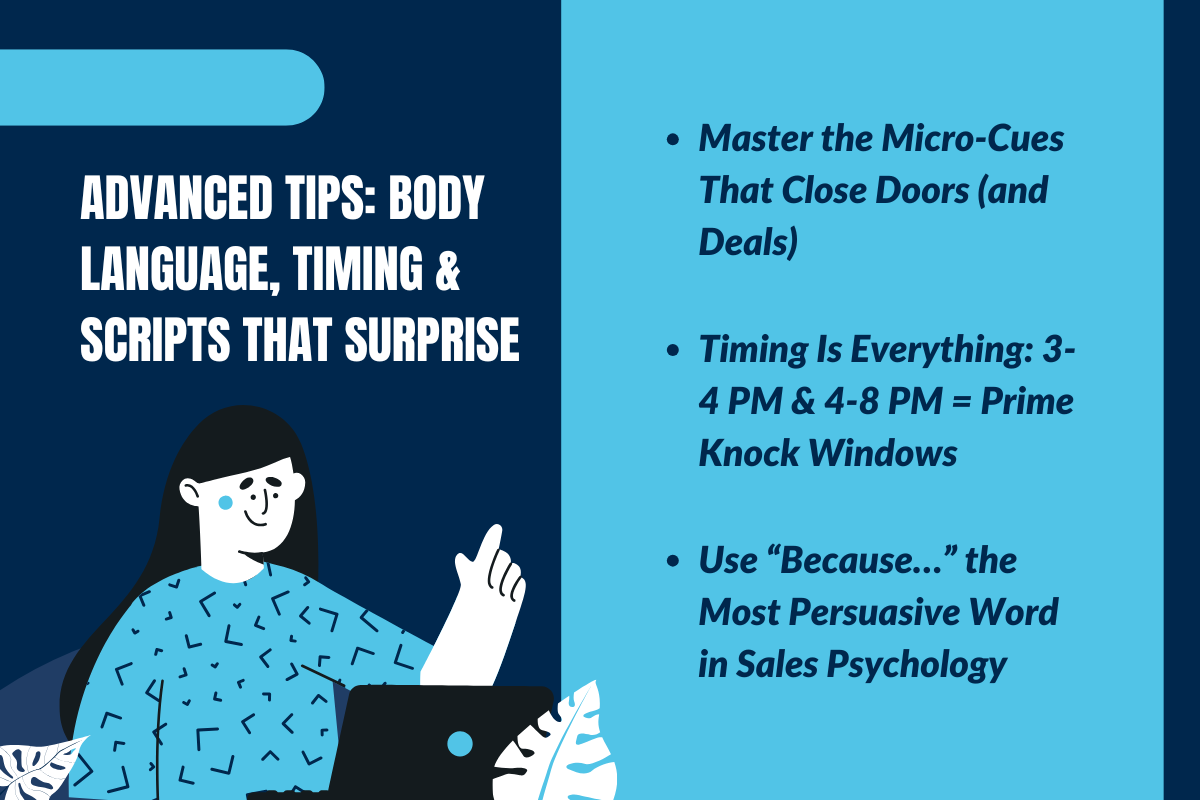
1. Body-language secrets for field reps
- Subtle mirroring: if the homeowner crosses arms, don’t lean into theirs; instead, maintain an open posture and lead gently.
- Use their doorstep as your “stage”: step back when they open the door, respect their space.
- Hand gestures: open-hand, palms visible, show honesty. Avoid closed-arms or constant clipboard shield.
- Voice tone: warm, energetic, but not aggressive. Match their pace; don’t try to overpower.
2. Timing & “when to knock” science
- Best engagement windows: late afternoon (3-4 pm) and early evening (4-8 pm) weekdays; Saturday morning also performs well.
- Avoid: Early morning (people rushing out), dinner hour (busy), late night (intrusive).
- Consider local context: In your market, what’s the typical schedule? Adjust accordingly.
3. Scripts & micro-tweaks that make the difference
- Use the word “because”: e.g., “I’m here because we’re working in your neighborhood today…”, one of the most influential words in psychology.
- Micro-commitments: “Just a 5-minute check…” is more effective than “May I talk for 20 minutes?”
- Use referral lines: “Your neighbor told me you might be interested…” (only if true)
- Use mini-closing check-ins during conversation: listen for cues like “how much?” or “when can you start?” and move to close.
4. Handling the “hard no” and bouncing back
Respect the “no”:
“Thanks for your time. If anything changes, here’s my card.”
Leave the door open.
Re-visit after a defined period (say 6-8 weeks) with an updated value-offer/testimonial.
Emotional reset: After a rejection, mentally reset. It’s not personal – it’s business. In fact:
“I made $3,000 my first month doing D2D… I made $5,000 the second month. Once you get the swing of it…”
Use such a mindset, but keep it realistic.
5. Technology supports that field reps should use
- Mobile CRM/app (territory map, notes, next-step reminders)
- Digital payment tools: if you can close on-site right away, conversion improves.
- Tablet or device to show visuals/testimonials rather than just talking.
- Route optimization: Plan your knocks so you walk fewer steps, save time, and maintain energy.
Putting It All Together: 30-Day Kickstart Plan
Week 1: Know Your Territory & Test Your Opening
- Map your area. Choose neighborhoods with higher potential.
- Knock only in your prime time windows.
- Use your new opening script. Track how many houses → how many talk → next steps scheduled.
Week 2: Refine Your Pitch & Start Closing Early
- Use the story-arc (hook/value/proof/CTA).
- Start with one closing technique (Assumptive or Summary).
- Track what objections come up – build your “objection-handling toolkit”.
Week 3: Follow-Up & Build Pipeline
- From your log, schedule follow-ups for those “maybes”.
- Ask for referrals: “Do you know a neighbor who might also benefit?”
- Use leave-behind materials + SMS/WhatsApp follow-up.
Week 4: Review Metrics, Refresh Script & Scale
- Evaluate your knock → talk → close ratios. Identify your bottleneck.
- Rotate script variant under one manager: change opening, update testimonial, shift value point.
- Celebrate wins: pick your best door story of the month and share with the team.
- Coach/re-energize: body-language check, mindset refresh.
Ongoing: Monthly review and improvement
Each month:
- Which script variant worked best?
- Which time window gave a higher conversion?
- Which rep is excelling (if you’re managing a team)?
- Refresh testimonial stories; refine referral approach; keep momentum going.
Must read: How to Train a Door-to-Door Sales Team Without Burning Time
Conclusion
Smart prospecting and qualification make your day much more efficient. Use tailored scripts with real-world stories, hook, value, proof, and CTA. Use closing techniques aligned to the prospect’s state, and follow through with every “yes” or “maybe”. Follow-up and retention separate the average from the high performers.
Reps matter in door-to-door selling. Their mindset, body language, script freshness, and data-driven review are just as important as “what you say”.
Door-to-door selling isn’t dead, but the old ways are. If you keep using the same tired script in D2D sales, no wonder you’re stuck. But if you adopt this playbook as a door salesman, you’ll stand out. You’re not just knocking doors, you’re creating connections, solving problems, and building trust.
Your next step:
Pick one technique today. It could be your new opening line, or switching your time window to 4-8 pm. Test it this week. Track it. Adjust next week. See what happens. You’ve got this, especially when discussing products like solar panels or home services.
About KnockBase
Knockbase is an all-in-one gamified platform built specifically for door-to-door sales teams. It helps reps plan and optimize territory routes, track leads and conversions in real time, and access updated sales scripts and training resources right from the field.
With Knockbase, sales professionals can log customer details, manage follow-ups, and monitor team performance through smart analytics, all in one place. It’s designed to make every rep more efficient, every conversation more meaningful, and every knock count.
Your next “yes” is waiting; unlock it with Knockbase today.
FAQs
1. What is the success rate of door-to-door sales?
The average success rate ranges from 2% to 3%, but top-performing reps using smart tools and refined scripts, like those in Knockbase, can achieve 10% or higher with consistent follow-ups.
2. What does D2D mean in marketing?
D2D, or door-to-door marketing, is a direct selling approach where sales reps personally engage with potential customers at their homes or businesses to build trust and demonstrate products face-to-face.
3. How does Knockbase help door-to-door sales teams?
Knockbase helps reps track leads, map territories, log conversations, analyze performance, and manage follow-ups, all in one app. It’s built to simplify workflows and boost conversion rates.

